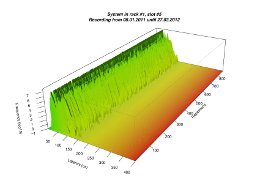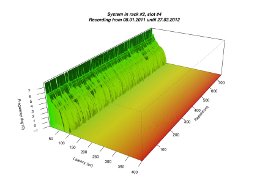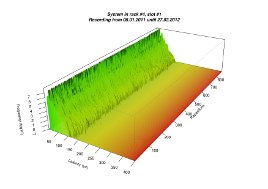Dates and Events:
|
OSADL Articles:
2023-11-12 12:00
Open Source License Obligations Checklists even better nowImport the checklists to other tools, create context diffs and merged lists
2022-07-11 12:00
Call for participation in phase #4 of Open Source OPC UA open62541 support projectLetter of Intent fulfills wish list from recent survey
2022-01-13 12:00
Phase #3 of OSADL project on OPC UA PubSub over TSN successfully completedAnother important milestone on the way to interoperable Open Source real-time Ethernet has been reached
2021-02-09 12:00
Open Source OPC UA PubSub over TSN project phase #3 launchedLetter of Intent with call for participation is now available |
OSADL celebrates one-year anniversary of the QA Farm
... and presents long-term data of the determinism of mainline Linux real-time
Several systems of the OSADL QA Farm now run for more than a year under continuous monitoring. Among many other variables, we measure the total preemption latency (interrupt processing plus wakeup of a user space process). With two times 100 million wakeup cycles per day, a total of 73 billion cycles are recorded in a year's time.
The below 3D graphs represent a subsample of the more than 50 systems currently under test in the OSADL QA Farm. Each graph consists of more than 730 latency plots put before one another with the time scale running from back to front. A latency plot displays the number of samples within a given latency class (resolution 1 µs). The logarithmic frequency values at the y-scale ensure that even a single outlier would be displayed (for details of the test procedures and the load scenarios please refer to this description). The absence of any outlier in all the very different systems clearly demonstrates that the perfect determinism of the mainline Linux real-time kernel is a generic feature; it is not restricted to any particular architecture:
- Top left: x86 (AMD Athlon 64 bit 2800+)
- Top right: ARM (TI OMAP3517 @496 MHz)
- Middle left: MIPS (ICT Loongson-2 64 bit @533 MHz)
- Middle right: ARM (i.MX35 @533 MHz, Phytec phyCORE-M)
- Bottom left: x86 (Intel Atom N270 @1600 MHz)
- Bottom right: x86 (VIA C7 @1000 MHz)
Thus, what was believed to be impossible is reality now.
Click on a graph to display it at a higher resolution and to provide a link to a vector image in print quality.











